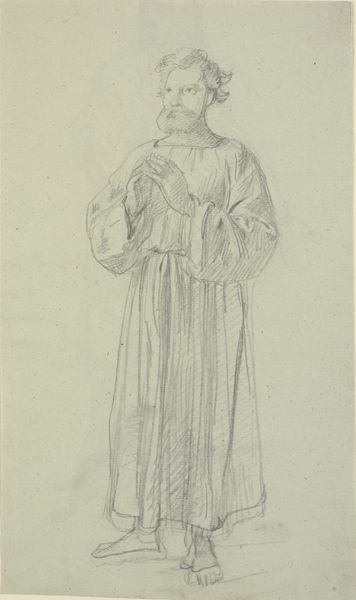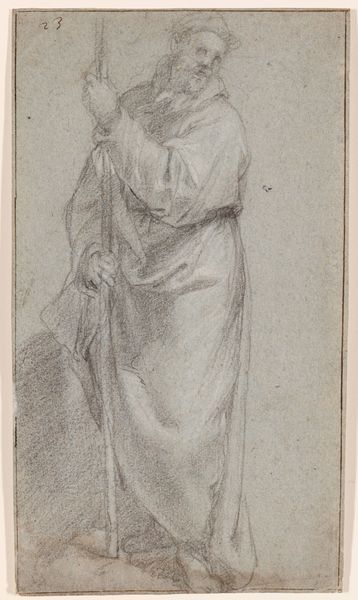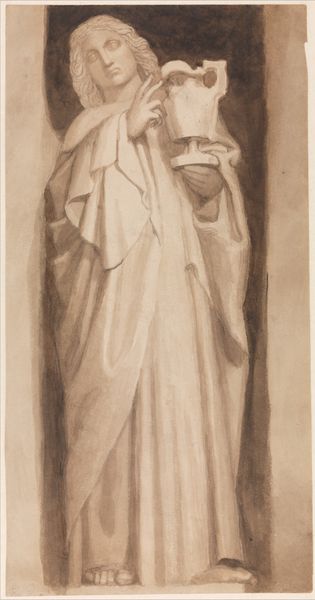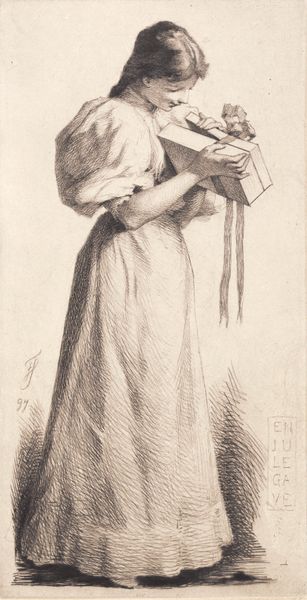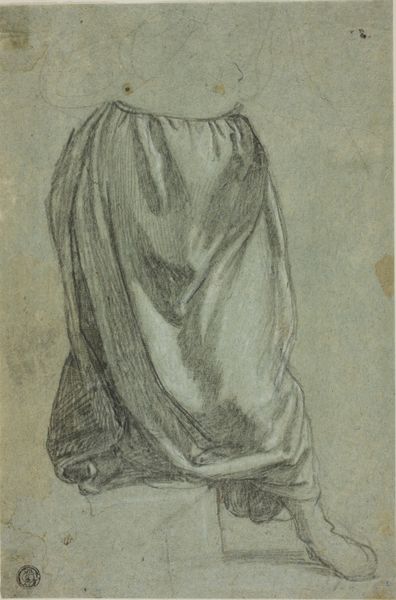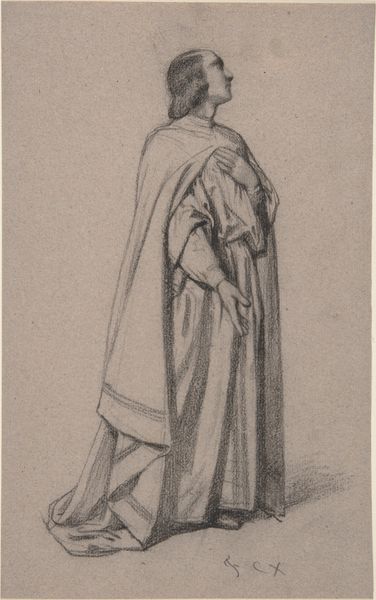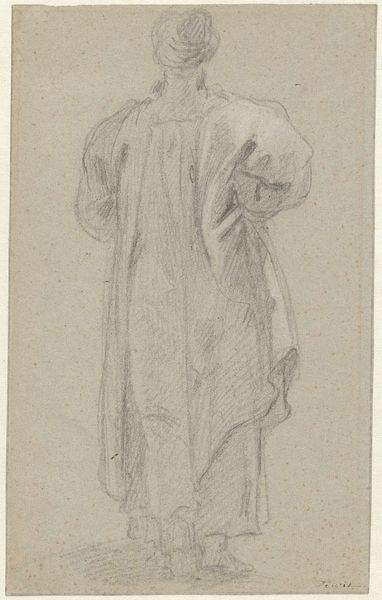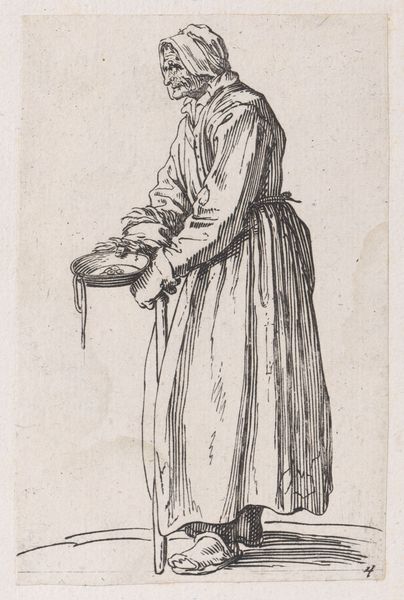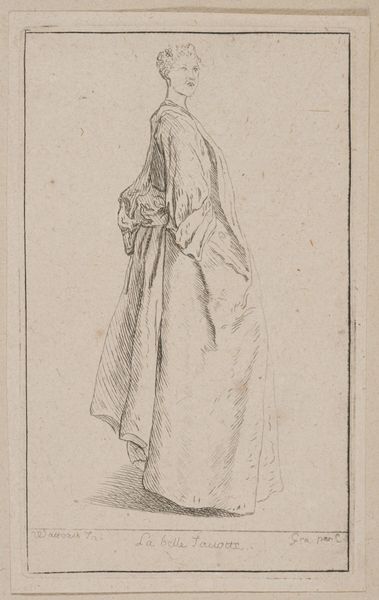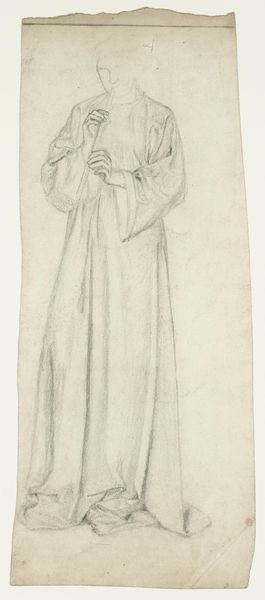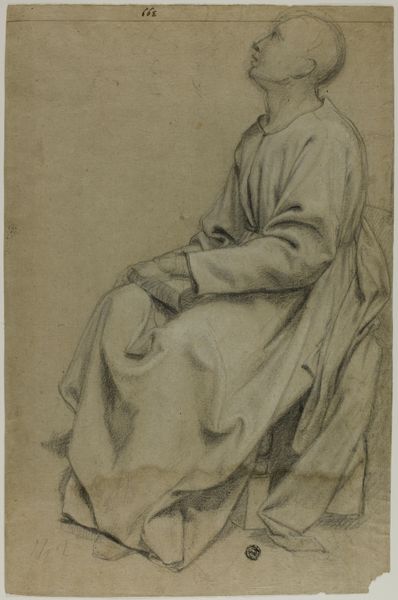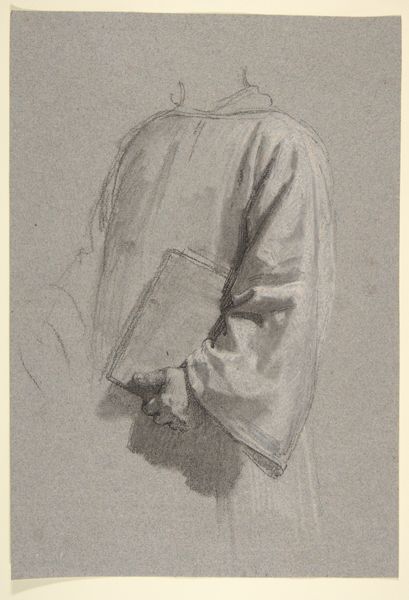
Three-Quarter View of a Standing Male Robed Figure 1813 - 1880
0:00
0:00
drawing, print, pencil
#
portrait
#
pencil drawn
#
drawing
# print
#
pencil drawing
#
pencil
#
men
#
portrait drawing
#
history-painting
#
academic-art
#
realism
Dimensions: 10 11/16 x 6 3/16 in. (27.2 x 15.7 cm)
Copyright: Public Domain
Editor: Here we have François-Claudius Compte-Calix’s "Three-Quarter View of a Standing Male Robed Figure," made sometime between 1813 and 1880. It’s a pencil drawing, and I’m immediately struck by how much detail is conveyed with so few lines. What do you see in this piece? Curator: It is a study of masculinity and dress codes from the era. It's important to remember this was made during a period of strict social hierarchies, deeply embedded gender roles, and nascent photographic technology. The pose, the robe—it speaks to a carefully constructed identity. What do you notice about his attire and posture? Editor: Well, the robe seems almost theatrical, not something one would wear everyday. The pose, with his hand to his chin, is classic, suggesting contemplation, or maybe even a hint of melancholy. Curator: Exactly! Theatricality becomes tied to male identity. This echoes classical ideals of masculinity and artistic license during the era but it must be questioned for performative gender dynamics within elite circles. Consider this alongside contemporaneous debates about citizenship and belonging, it all feeds into understanding visual power structures. Do you think the artist would portray his subject differently if his subject were a woman? Editor: Almost certainly. A female subject may be depicted more passively. There's so much emphasis on his intellect, presented physically. Curator: Precisely. We must look at such images as staged commentaries which either reinforced dominant powers or gave viewers opportunities to analyze inequities critically. Editor: This really changes how I see these portraits, it's not just a picture; it's a carefully constructed representation. Curator: Absolutely, art is almost always an intervention. This forces viewers into reflection, either subconsciously or deliberately affecting how they understand themselves and the world.
Comments
No comments
Be the first to comment and join the conversation on the ultimate creative platform.
